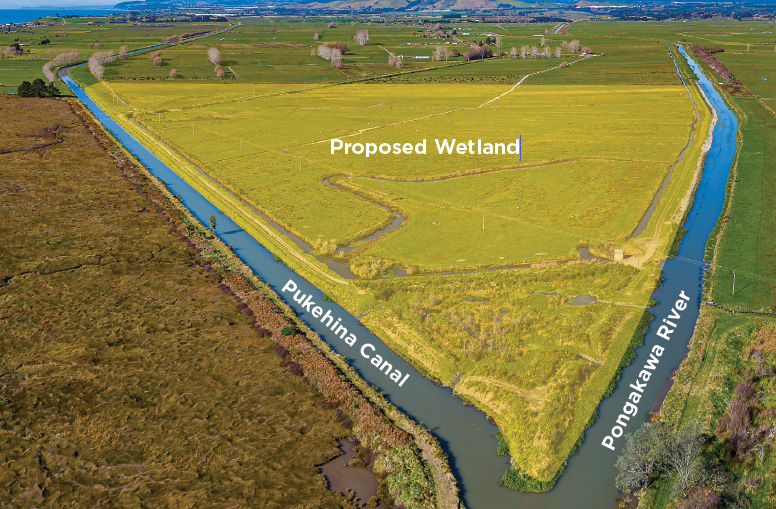Toi Moana Bay of Plenty Regional Council and iwi collective Te Wahapū o Waihī have a shared vision of creating a ‘korowai around the Waihī Estuary’ – a protective buffer of wetlands designed to help restore the health of this highly degraded area.
The first step in achieving this vision was the purchase of a 109ha Cutwater Road farm next to the Waihī Estuary in June 2023. The land was subdivided – 79ha was sold to a neighbouring farmer, who has an interest in contributing to estuarine health, while the remaining 30ha will be converted into wetland.
Initial purchase of the land was funded 50% by Toi Moana Bay of Plenty Regional Council and 50% from Te Wahapū o Waihī through the Ministry for the Environment’s Freshwater Improvement Fund.
The concept design for the wetland involves creating 20ha of coastal wetlands and 10ha of constructed treatment wetland. Once complete, both wetlands will help improve water quality and biodiversity, contribute to climate change mitigation and adaptation outcomes through carbon sequestration, and support the cultural and recreational values of the area.

Why are we doing this?
The Waihī Estuary has been identified as one of the most degraded in the country, due to decades of wetland drainage, river channelisation, land use change and contaminated runoff throughout the 35,000ha catchment.
Monitoring and modelling work shows it needs substantial reductions of 40-60% in sediment, nutrients and pathogens, plus in-estuary interventions, to achieve a state of moderate health.
Modelling of the area was done by DHI Water and Environment, who found that providing wider coastal wetland buffers was one of the key interventions required to improve estuarine health. Providing more capacity allows the tide to come in and flush the estuary, cleaning it of excess contaminants in the process.
However, reductions in freshwater-borne contaminants through implementation of good farming, forestry and horticultural practices are very important as well. Regional Council staff are currently working with 37 landowners in the Waihī Estuary catchment on active Environmental Programmes and are in the process of negotiating with a further 25. In addition to the landowner work, there are numerous contributions being made by others, including community groups Maketū Ōngātoro Wetlands Society and Wai Kokopu Inc.
What’s happening now?
- Co-design of the coastal wetland is currently underway, with works planned to start at the end of 2024. Design and construction of the treatment wetland is due to begin in 2025.
- The Nature Conservancy Aotearoa is conducting blue carbon research on the site. This is part of a pilot programme to investigate the carbon storing potential of restored coastal wetlands to address climate change and biodiversity loss. The results of this research will provide baseline data to support the measurement of the project’s long-term carbon sequestration success.
News and upates
To avert the worst of the climate crisis we need to reduce our emissions. One way is to phase out fossil fuels, to leave forms of carbon like oil and gas locked up in the ground. But we can also look at ways to lock up more carbon, long term. And some options for this are in our oceans.
Toi Moana Bay of Plenty Regional Council and iwi collective Te Wahapū o Waihī have partnered to return 30ha of low-lying farmland to coastal wetland in an effort to improve the ecological health of Waihī Estuary.


